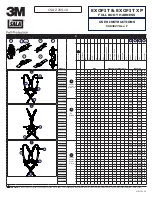
Product Service 816-333-8811 or 1-800-522-7658
1
Original instructions
C
HAPTER
1
I
NTRODUCTION
Congratulations on your purchase of a Labconco FreeZone® Freeze Dry System,
which is designed for laboratory lyophilization procedures. The refrigerant used in
the refrigeration system is HCFC-free so it will not endanger the environment.
The unit is easy to install and maintain. Proper care and maintenance of this
product will result in many years of dependable service.
Intended Use
The Labconco Freeze Dryers described in this manual are intended for laboratory
use to facilitate the lyophilization process.
Freeze Dry Process
Freeze drying is an important process in sample preparation and for the preservation
and storage of biologicals, pharmaceuticals and foods. Of the various methods of
dehydration, freeze drying (lyophilization) is especially suited for substances that are
heat sensitive. Other than food processing (e.g., coffee, whole dinners), freeze drying
has been extensively used in the development of pharmaceuticals (e.g., antibiotics) and
preservation of biologicals (e.g., proteins, plasma, viruses and cell lines). The
nondestructive nature of this process has been demonstrated by the retention of
viability in freeze dried viruses and microorganisms.
Freeze drying is a process whereby water or other solvent is removed from frozen
material by converting the frozen water directly into vapor without the
intermediate formation of liquid water. The basis for this sublimation process
involves the absorption of heat by the frozen sample in order to vaporize the ice;
the use of a vacuum pump to enhance the removal of water vapor from the surface
of the sample; the transfer of water vapor to a collector; and the removal of heat by
the collector in order to condense the water vapor. In essence, the freeze dry
process is a balance between the heat absorbed by the sample to vaporize the
ice and the heat removed from the collector to convert the water vapor into ice.







































